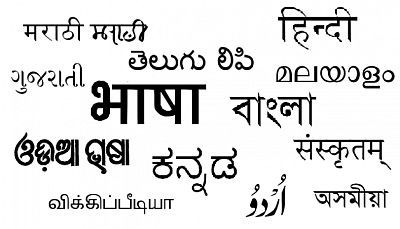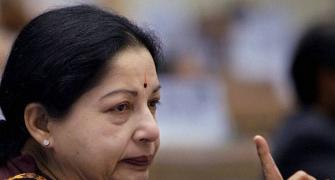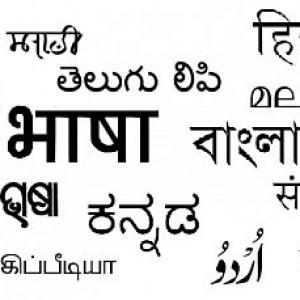 Our problem is that we look at these words from a non-Indic perspective, says Sanjeev Nayyar.
Our problem is that we look at these words from a non-Indic perspective, says Sanjeev Nayyar.
Hindu, Hindustan and Hindi. Realms of paper written on these words! Our problem is that we look at these words from a non-Indic perspective. This article seeks to throw light on the subject.
Hindu
Scholar and ex-President Dr S Radhakrishnan wrote: “The people on the Indian side of the Sindhu were called Hindu by the Persian and the later western invaders (The Hindu View of Life by Dr Radhakrishnan pg 12). The term ‘Hindu’ according to Dr Radhakrishnan had originally a territorial and not a creedal significance. It implies residence in a well defined geographical area”. (Bramchari Siddheswar Shai v State of West Bengal, 1995 AIR Supreme Court 2089).
As per this definition all those living in India are Hindus. This definition was apt till the Muslim invasion. Later the invaders used the term Hindu to refer to original residents and became a label to distinguish the locals from the invaders i.e. Muslims.
‘As part of their divide and rule policy the British used the words Hindu and Hinduism, emphasising the religious and political overtones of these words. Western writers then adopted these terms for the sake of convenience, and Eastern writers conformed to the norms set by those in power.’ Seven Systems of Indian Philosophy by Pandit Rajmani Tugnait.
Having said that it would be appropriate to say that atleast 96 per cent of Indians today have Hindu ancestry. I am told that in the Gulf, Arab Muslims refer to all Indians as Hindus.
Note that in no Indian scripture is the word Hindu mentioned. The word Hindu originates from the Arabic word ‘Hind’.
In the 1920’s Veer Savarkar defined a Hindu ‘as one who regarded India from the Indus to the Seas as his fatherland and holyland’ (Veer Savarkar by Dhanajay Keer). Times had changed so Savarkar’s definition reflected a cultural and nationalist perspective.
The Urdu English dictionary (Standard 20th century Dictionary by Educational Publishing House, Delhi) defines a Hindu ‘as slave, thief, and black’. The Urdu Hindi Shabdkosh (Uttar Pradesh Hindi Sansthan Lucknow) defines Hindu as ‘one who believes in Murthi Puja and follows the Vedas’.
Being aware of the English meaning a few Sikh friends refused to be called Hindus. Murthi Puja was started by the followers of Buddha so the second definition is not entirely correct.
During British rule the word Hindu became Hinduism just like socialism, Marxism. The word Hinduism is not representative of the original word ‘Sanatana Dharma’ which means ‘the Eternal or Universal Dharma’. Dharma means universal law, the fundamental principles behind this marvelous universe like the Law of Karma. Sanatana means perennial, referring to eternal truths that manifests in ever-new names and forms.’ Because of its intrinsic nature Sanatana Dharma cannot be straight jacketed into a definition.
Hindustan
The Constitution uses two words for our country, India in English and Bharat in Hindi.
The word Bharata i.e. Bha means light and knowledge and rata means devoted. Bharata means devoted to light as against darkness. In a spiritual sense it means knowledge of inner self attained by removing ignorance. Thousands of years later India is still known for spirituality. Bharata is also the name of an ancient King whose name means ‘one who is capable of nourishing and protecting’.
The word 'Bharat' is also used in the Holy Gita and refers to Arjuna as the best, foremost among the Bharata dynasty. Refer chapter number/slokh 3.41, 7.11, 7.16, 8.23, 14.12 and 18.36.
Hindustan actually means ‘Urdu speaking areas of the Indian sub-continent’. Most Indians who use the word to describe India are probably unaware that it excludes a substantial part of modern day India.
Hindi and Hindustani
From the beginning of the 20th century the people have accepted a form of western Hindi, actually the Khariboli speech of Delhi, as their language of education, literature and public life. It became the national language while Maithili, Magahi, Bhojpuri, Awadhi, Bagheli, Brajabhasa, Chattisgarhi with other central and western Himalayan dialects being described as dialects of Hindi.
Effective literary development of Hindi started only after 1850. Prior to 1850, when we said Hindi literature it meant Brajbhasa the most important form of western Hindi.
With the death of Mughal emperor Auranzeb, the decline in Muslim power and emerging supremacy of the Marathas, Muslim morale declined. It was sought to be enhanced by marrying local dialect Hindi with Persian/Arabic. An Urdu translation of the Koran was done in 1791 which increased Urdu’s popularity. Persian ceased to be official language of India in 1837.
With the advent of British rule in Punjab, Urdu became the dominant language in administration and education. (could be a reason why post 80 Punjabis love the language). Meanwhile Arya Samaj (founded by Gujarati Swami Dayanand Saraswati) led a successful a Hindi revivalist movement in Punjab, Uttar Pradesh and Rajasthan.
So Urdu was the language of the Muslims and Hindi of the Hindus. Gradually the language issue got caught in the Hindu-Muslim cross-fire prior to Partition. A compromise gave birth to the birth of Hindustani which contains both Hindi and Urdu words.
Most people speak Hindustani but think they are speaking Hindi. Language spoken in Bollywood movies is Hindustani and is mostly Urdu.
Another source of confusion is the word philosophy.
Darsana and Philosophy
Philosophy is a western word which mainly relies on intellectual pursuit. The corresponding Indian word is Darsana which relies on direct vision of truths (experienced by ancient sages all over Bharat) and pure Buddhi (reasoning).
India has nine schools of darsanas meaning nine ways to achieve self-realisation. These are Nyaya, Vaisheshik, Sakhya, Yoga, Mimamsa, Vedanta, Carvaka, Jaina and Buddha. Others are a mixture of the ideas of these systems. The more prevalent schools today are Yoga, Vedanta, Jaina and Buddha. Note there is no Hindu school of philosophy.
What unites these schools is direct experience, acceptance of authority, harmony amongst schools, parallel growth and co-existence of so many schools, open mindedness, support of logic and reasoning, belief of eternity, law of karma, moral and ethical teachings, acknowledgement of suffering, thoroughness, practicality and being inward looking.
Today some schools of darsana have become synonymous with religion. For eg there is a book by Munisri Nyayavijayaji titled ‘Jaina Darsana’ in Gujarati (meaning Jaina way to self-realisation); in English it became Jaina Philosophy and Religion.
Just like Sanatana Dharma became Hinduism, Jaina Dharma became Jainisn. But what does the term ‘Jaina’ mean. “The term ‘Jaina’ is derived from the term ‘Jina’. And the term ‘Jina’ is the common name for the supreme souls who are totally free from all the feelings of attachment, etc that defile the soul. It is a noun from Sanskrit verbal rcot ‘ji’ meaning ‘to conquer. And devotees of Jina care called Jaina’. (Jaina Darsana).
So also the word Sikh is derived from the Sanskrit word ‘Shishya’ means student. Starting the late 19th century Sikh became Sikhism. In terms of darsana it is nothing but distilled Vedanta said the late author/editor Khushwant Singh.
The point is how use of English language and western concepts confuse the aam aadmi. This does not imply that all in the west or use of English language is bad.
Hope we will overcome colonial and Nehruvian mindsets to start thinking desi. We have a son of the soil pradhan mantri now!
Note: Concept of ‘Darsana’ taken from ‘Seven Schools of Indian Philosophy’ by Pandit Rajmani Tugnait.
Sanjeev Nayyar is founder of www.esamskriti.com and a columnist.










